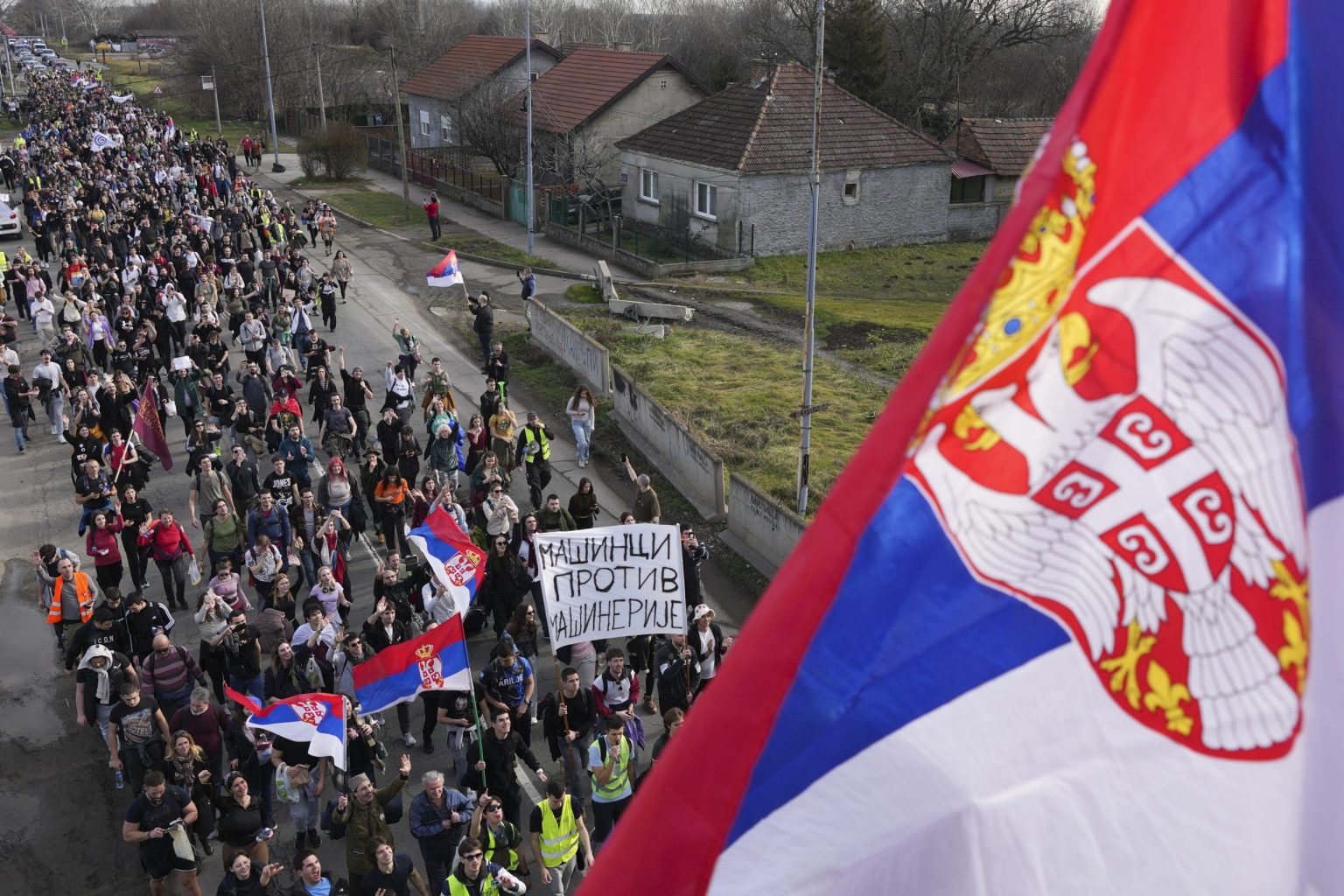Paragraph 1: Mass protests have engulfed Serbia for months, ignited by the tragic collapse of a railway station canopy in Novi Sad on November 1st, which claimed the lives of 15 people. Tens of thousands of university students have taken to the streets, demanding justice and accountability for those responsible. The renovations leading to the collapse were conducted by two Chinese companies, adding another layer of complexity to the situation. The protests quickly escalated, culminating in a general strike that saw widespread work stoppages, street blockades in Belgrade, and university occupations in solidarity with the student-led movement. Experts observing the situation describe the scale and intensity of the protests as unprecedented in recent Balkan history.
Paragraph 2: The sustained pressure from the protests forced significant political repercussions. Prime Minister Milos Vucevic tendered his resignation, followed by the mayor of Novi Sad. While the prime minister’s resignation marked the highest-level departure from the government, it failed to appease the protesters. Their demands extend beyond resignations to include a transparent investigation into the events leading up to the collapse and the prosecution of those responsible. The government’s initial response, characterized by attempts to downplay its role and accusations of foreign interference, further fueled public anger and distrust. This perceived evasion of responsibility has been interpreted by some as a reflection of deep-seated institutional corruption within Serbia.
Paragraph 3: The student protesters have articulated clear objectives. They seek full transparency regarding the circumstances surrounding the railway station collapse, including the renovation process and any potential negligence or malpractice. Crucially, they demand accountability, insisting that those responsible for the loss of life face legal consequences. This focus on transparency and accountability contrasts sharply with the government’s initial attempts to deflect blame and minimize the incident. The protesters view the tragedy not as an isolated event, but as a symptom of systemic corruption and negligence within the government, highlighting the broader implications of the disaster.
Paragraph 4: The prime minister’s resignation has created a power vacuum, leaving the government in a state of flux. Serbia now faces a constitutional deadline of 30 days to form a new government or call for snap elections. President Aleksandar Vucic has stated he will decide within 10 days on the course of action. These protests represent a significant challenge to Vucic’s 13-year rule, marking the most serious threat to his authority and the dominance of his party. Despite the internal turmoil, Serbia’s Foreign Minister, Marko Djuric, has emphasized the country’s commitment to stability, reform, and continued economic and democratic development, assuring the international community that Serbia remains on a steady path.
Paragraph 5: A key aspect of these protests is the student-led nature of the movement, distinct from the traditional political opposition. This separation from established political parties, often perceived as weak and ineffective, has broadened the appeal of the protests and galvanized public support. The students frame their demands as a call for functional institutions and accountability within the government, rather than a partisan political struggle. This framing has resonated with a wider segment of the population, frustrated with years of perceived government inaction and institutional deficiencies. The subsequent suppression of the protests by security forces has further intensified public outrage and bolstered the movement.
Paragraph 6: International observers are closely watching the unfolding events in Serbia. Some analysts caution against accepting President Vucic’s attempts to portray himself as balancing between the U.S. and its adversaries. They point to Serbia’s close ties with China, Russia, and Iran, alongside the presence of Chinese weaponry and investments in the country, as evidence of Vucic’s geopolitical alignment. Critics also highlight Vucic’s domestic propaganda, which often portrays the U.S. as an enemy, raising concerns about his true allegiances. The current protests present a critical juncture for Serbia, with the potential to reshape the country’s political landscape and its relationship with the international community.

